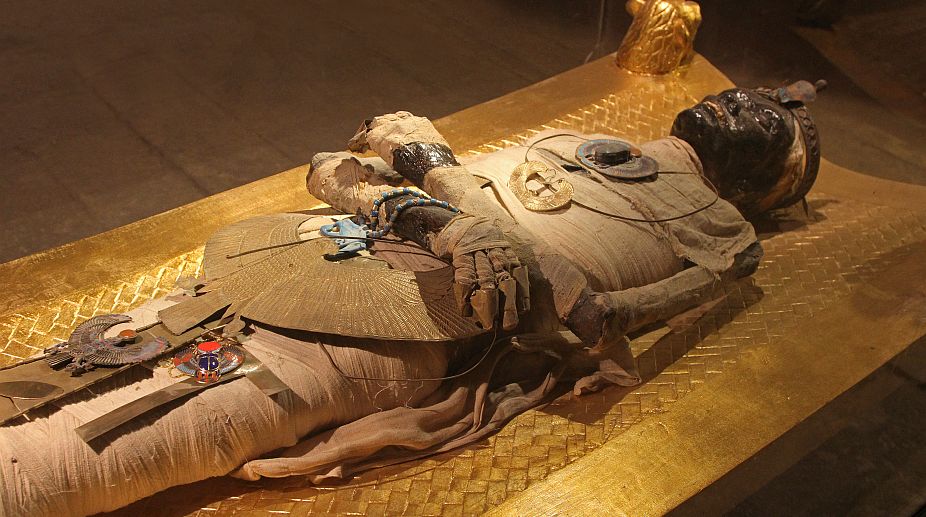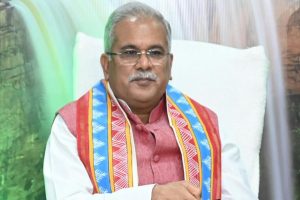Egypt is keen to help India restore a 4,000-year-old mummy-in-residence which has been "lying in a bad condition" at the Indian Museum here, one of Asia's oldest, but is a star attraction for its visitors.
Hatem Tageldin, Egypt's Ambassador to India, who had visited the museum's Egyptian gallery in February 2016, has proposed an initiative to assist in the restoration of the mummies in India, including the one in Kolkata.
Advertisement
"I am not an expert, but I could see it (the mummy) was in a bad condition. We offered to send a team of experts from Egypt if India will host them and/or invite a group from the Indian side to visit Egypt to provide training for them," Tageldin told IANS.
The envoy has also expressed a desire to meet the director-in-charge of the museum.
"We hope to hear from them on our proposal. We need details and documents about the mummy… which family it belongs to, how it arrived in India, etc., so we can help in restoring it," he said, adding the cooperation on offer was sent through official channels and was extended for all mummies in India.
"We heard there are six or seven mummies in India."
On his visit to the Egyptian gallery at the Indian Museum in December 2016, Minister of State for External Affairs M.J. Akbar expressed dissatisfaction over the mummy's preservation.
However, according to Indian Museum authorities, a "climate-controlled air-conditioned environment" is now maintained for the exhibit. In Arabic and Persian, an embalmed corpse is called "mumiya" and "mum", respectively, and the process by which an embalmed corpse is preserved with wax or bitumen in Egypt after the draining out of moisture is called mummification.
The mummy's arrival in India, reportedly from "tombs of the kings at Gourvah" (in Egypt) to Bombay (now Mumbai) via sea and then to Calcutta (now Kolkata), can be traced back to British India of the 1800s. It arrived in Calcutta in 1882 and was mentioned in a listing of the attractions of the museum published the next year.
It was originally encased in a wooden frame and covered with another frame on which the face of the mummy was carved.
In an insulated glass cabinet at the museum, it now lies nestled in the bottom half of the encasing while the top cover is removed and laid by its side, for visibility.
"The body is seen wrapped in cloth, the arms tied down to the sides. The flesh of the face and head has crumbled away, leaving the bones exposed. The mask which lay over the face has been removed and laid on the chest. This mummy is probably about 4,000 years old," says the write-up about the mummy at the museum.
Digital records of the Journal of the Asiatic Society of Bengal (Vol III, dated 1834) say the mummy was a gift to the Society, which founded the museum, from a British officer in the same year.
"A letter from Lieutenant E.C. Archbold of the Bengal Light Calvary, dated Bombay July 5, 1834, announced that he had forwarded to the Secretary (James Prinsep), as a present to the Asiatic Society of Bengal, an Egyptian Mummy."
"The mummy was obtained with some difficulty from the tombs of the kings at Gourvah," the Journal reports.
"The native crew on board the ship which brought Lieutenant A. from Mocha, having objected to receive the mummy with his baggage, he had been under the necessity of requesting one of the officers of the Sloop of War Coote to bring it onward to Bombay, whence it will be forwarded to Calcutta by the earliest opportunity."
The mummy is displayed along with another artefact from the nation, a mummified hand.
The mummified hand was gifted to the Asiatic Society of Bengal in 1844, as noted in the book "Jadughar" (the popular name of the museum) launched on the occasion of 200 years of the Indian Museum 1814-2014.
Commenting on the diplomat's view, Sayan Bhattacharya, Education Officer of the museum, said: "If there is an official request (for restoration) then the competent authority will take a call."
















